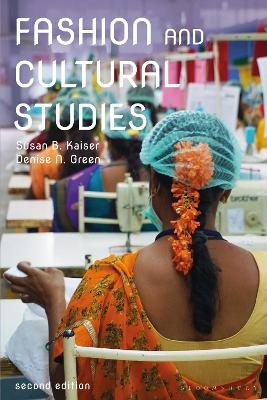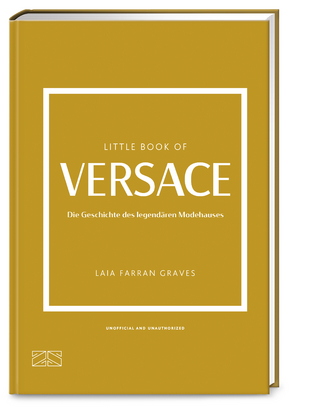
Fashion and Cultural Studies
Bloomsbury Visual Arts (Verlag)
978-1-350-10467-9 (ISBN)
Kaiser and Green use a wide range of cross-cultural case studies to explore how race, ethnicity, class, gender and other identities intersect and are produced through embodied fashion. Drawing on intersectionality in feminist theory and cultural studies, Fashion and Cultural Studies is essential reading for students and scholars.
This revised edition includes updated case studies and two new chapters. The first new chapter explores religion, spirituality, and faith in relation to style, fashion, and dress. The second offers a critique of “beauty” and considers dressed embodiment inclusive of diverse sizes, shapes and dis/abilities. Throughout the text, Kaiser and Green use a range of examples to interrogate the complex entanglements of production, regulation, distribution, consumption, and subject formation within and through fashion.
Susan B. Kaiser is a Professor at the University of California, Davis, in the Departments of Gender, Sexuality, and Women’s Studies; and Design. She is the author of The Social Psychology of Clothing (Fairchild 1997), and more than 100 journal articles and book chapters. She is also the editor of the journal Critical Studies in Fashion & Beauty. Denise N. Green is an Associate Professor at Cornell University where she also directs the Cornell Fashion + Textile Collection. She is on the editorial boards of the Clothing and Textiles Research Journal, Fashion Studies, Critical Studies in Fashion & Beauty, and was the Vice President of Publications for the Costume Society of America, 2017–2021.
List of Illustrations
Acknowledgments
1. Fashion Studies and Cultural Studies
Articulation
Style-fashion-dress
The fields of fashion studies and cultural studies
Conceptualizing culture and fashion
Circuit of style-fashion-dress model
Production
Consumption
Distribution
Subject formation
Regulation
2. Intersectional, Transnational Fashion Subjects
Assumption 1: Structure-agency dynamics include processes of persuasion, consent, and resistance.
Assumption 2: Subject formation through style-fashion-dress is a process of navigating intersectionalities.
Assumption 3: Structures of feeling – expressed through subject formation and the fashion process alike – articulate between everyday life and culture through the circuit of style-fashion-dress
Ambiguity
Cultural Ambivalence
Cultural Anxiety
Assumption 4: The field of critical fashion studies needs to move from identity nots to identity (k)nots
Assumption 5: Fashion is transnational – not merely western or “Euromodern"
Assumption 6: The process of negotiating ambiguity is not a level playing field, and it is a material process – especially in a transnational context
3. Fashioning the National Subject
Nation ? essence
Nation as different than: Representing the other
Folk costume, national dress and fashion
Working the hyphen: Nation-state and style-fashion-dress
French Revolution
Chinese Cultural Revolution (and beyond)
From European expansion to globalization
Decolonizing fashion: Beyond the metaphor
Globalization
Intersectionalities and entanglements
4. Racial Rearticulations and Ethnicities
Race and ethnicity: Sliding signifiers
Racial and ethnic rearticulations
Color
Hair
Ethnic re-articulations: Belongings-in-Difference
Sliding into appropriation, sliding into religion
5. Religion, Fashion, and Spirituality
Subject formation
Spirituality, subjectivity, and materiality
Modesty
Piety, orthodoxy, religiosity
Regulation
State alignment with religion
Freedom from religion
Freedom of religion (religious freedom)
Production, distribution, and consumption
The Jewish diaspora and the textile, clothing, and retail industries
The globalization of Muslim fashion
6. Class Matters, Fashion Matters
Conceptualizing class
Caste systems
Sumptuary laws, materials, and the “natural” order
Class, intersectionalities, and industrial capitalism
From textile to apparel production: At home, in the factory, and in protest
Class and fast fashion
Metaphors of class structure and change: The flows of fashion
Status claims and status demurrals
7. Gendering Fashion, Fashioning Gender: Beyond Binaries
Soft assemblages
Marking, unmarking, and remarking gender
Sex, gender, and style-fashion-dress: Feminist deconstructions
Theorizing the body and style-fashion-dress
Transgender studies through bodies and style-fashion-dress
Menswear out of the academic closet
Multiple masculinities
Zoot suit
La SAPE in Congo
US National Survey of Male Intersectionalities
8. Sexual Subjectivities and Style-Fashion-Dress
Sexual subjectivities
Binary “beginnings” and reversals
Homophobic discourses
On the protracted coming out of heterosexuality
1960s and 1970s: Social movements and sexual fashions
1980s and beyond: Queering fashion
Gazing subjects and positionalities
Sexuality through intersectionalities
9. Dressed Embodiment
From phenomenology to dressed embodiment
Abstracting the body and representing embodiment
Anthropometrics and sizing
Stigmatizing and celebrating fat bodies
Sizeism and the fashion industry
Flaunting fat
Dis/abled bodies
Athletics and bodily exceptionalism
Addressing ableism
Disabling environments and style-fashion-dress
Fashioning disability
Concealment
Diversion and reframing
Modifying and making
Compensation
Social uniqueness
Social inclusion
Embodied subjectivities
10. Bodies in Motion Through Time and Space
Time and space (and place)
Age/generation and place
Fashion’s way with time in space: Spatiotemporalities
Industrial time
Anti/nonlinear time and space
Nostalgia
Space-Time compression and “speed space”
Uchronic temporality and utopian spaces
Closing/opening thoughts
Bibliography
Index
| Erscheinungsdatum | 03.12.2021 |
|---|---|
| Zusatzinfo | 20 bw illus and 30 color illus |
| Verlagsort | London |
| Sprache | englisch |
| Maße | 156 x 234 mm |
| Gewicht | 692 g |
| Themenwelt | Kunst / Musik / Theater ► Design / Innenarchitektur / Mode |
| Sozialwissenschaften | |
| ISBN-10 | 1-350-10467-1 / 1350104671 |
| ISBN-13 | 978-1-350-10467-9 / 9781350104679 |
| Zustand | Neuware |
| Haben Sie eine Frage zum Produkt? |
aus dem Bereich


